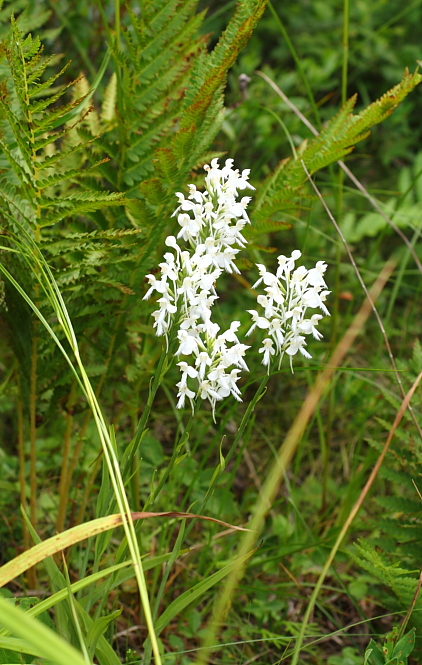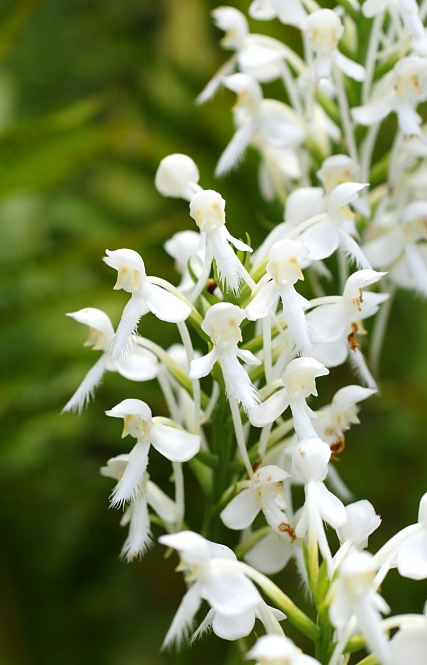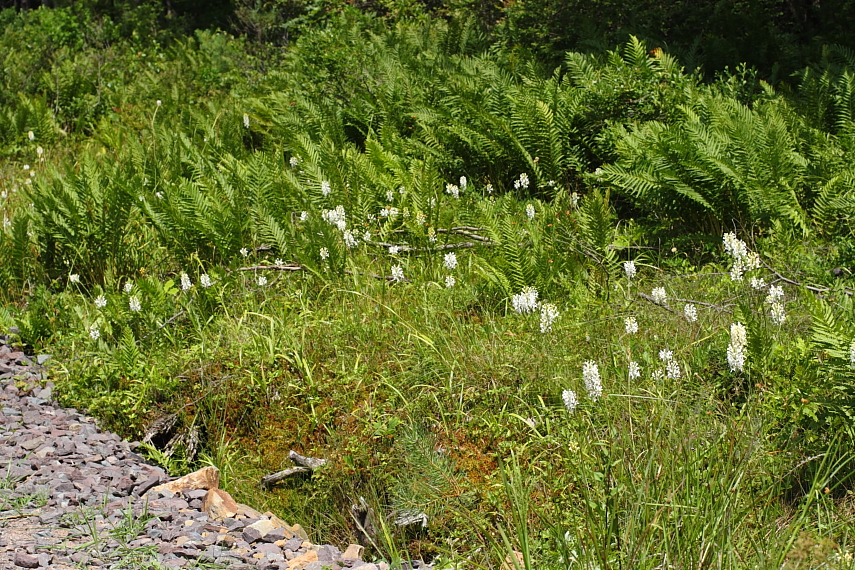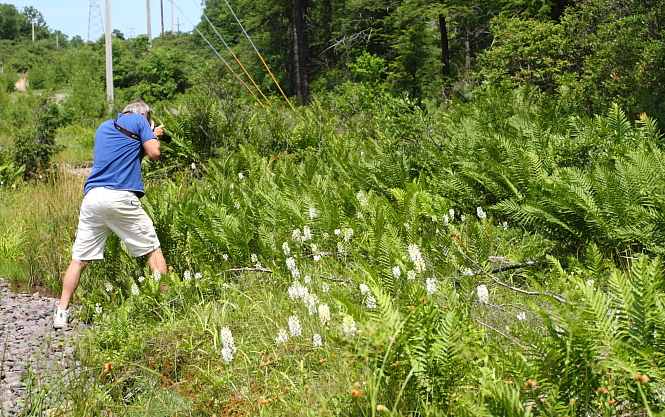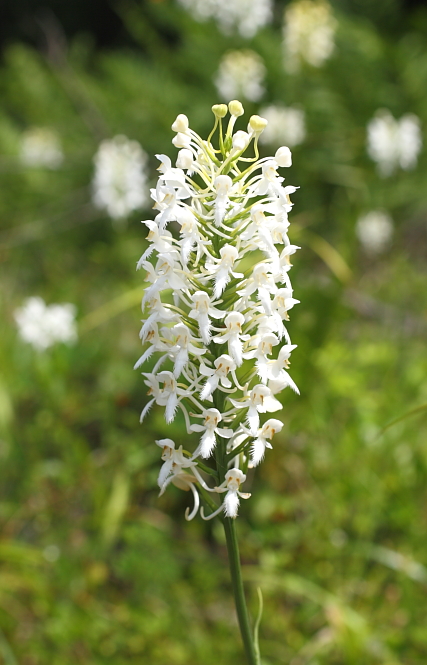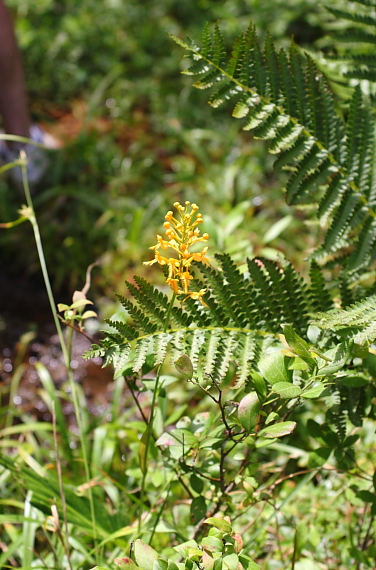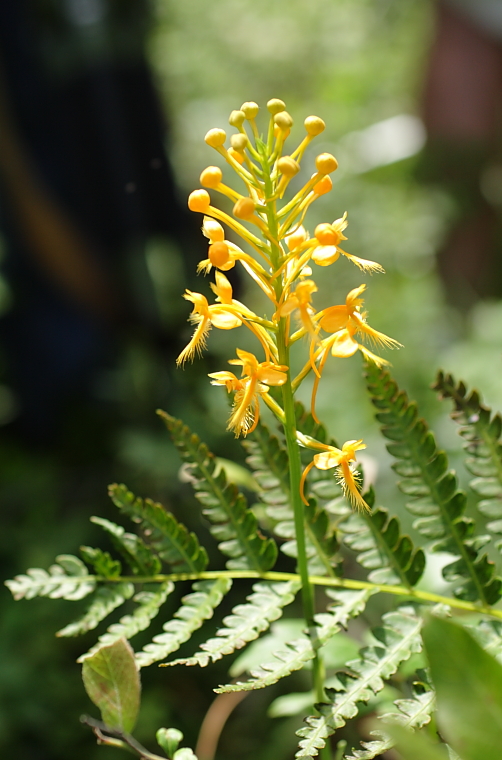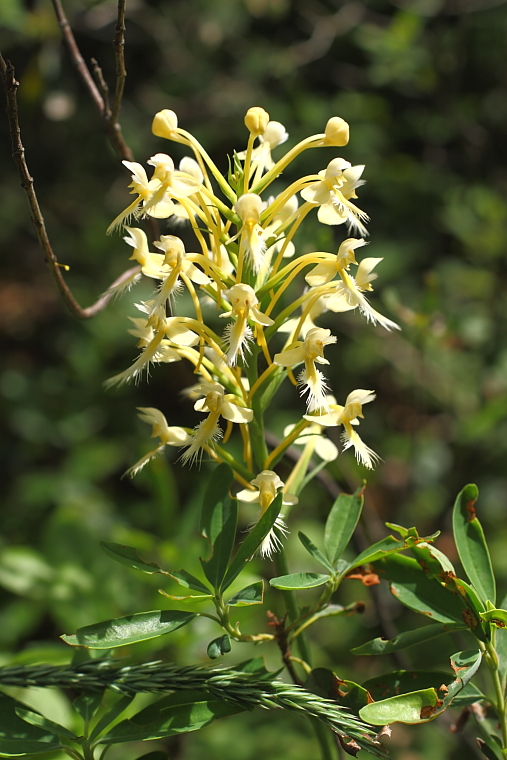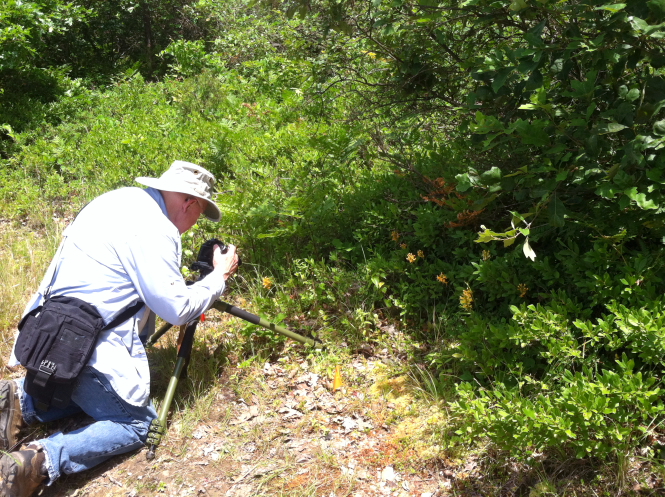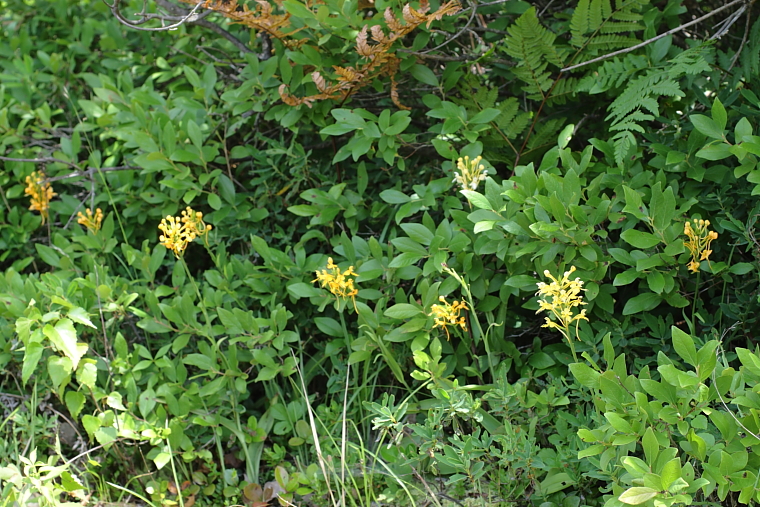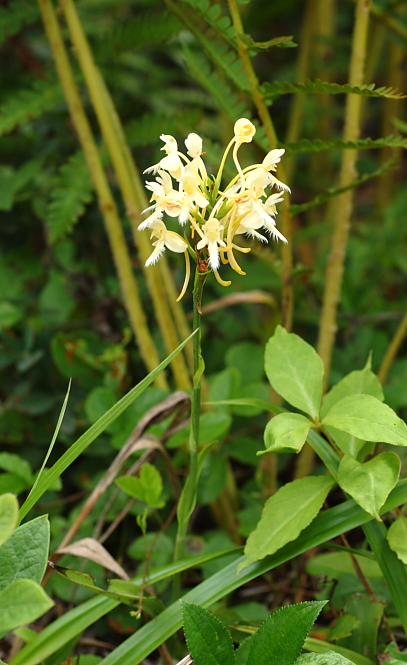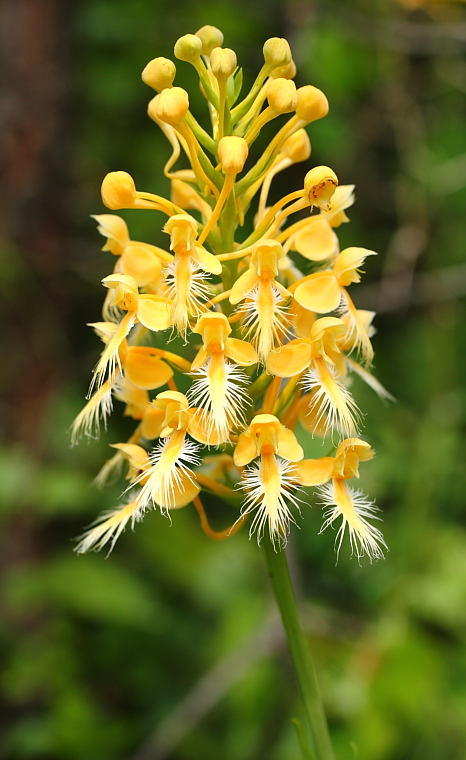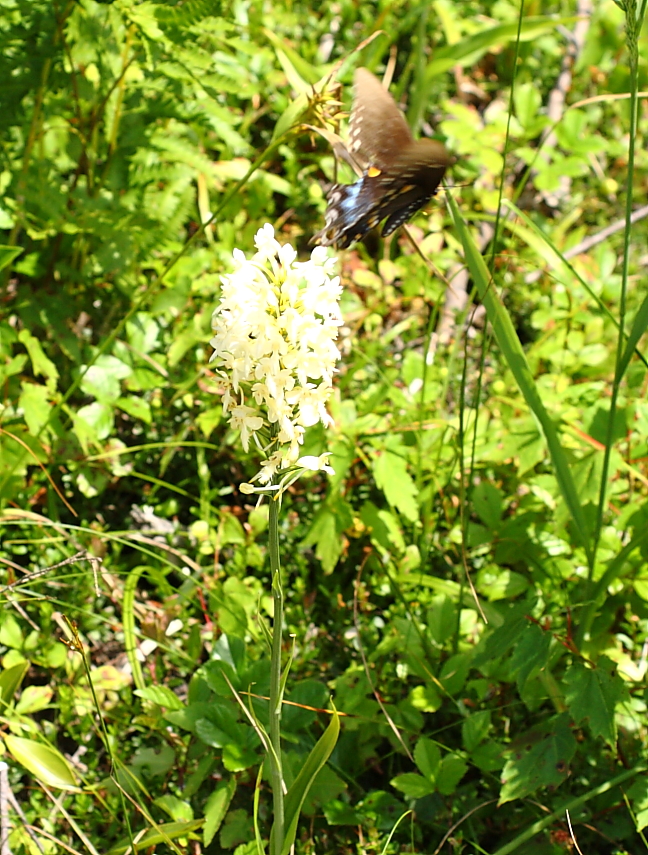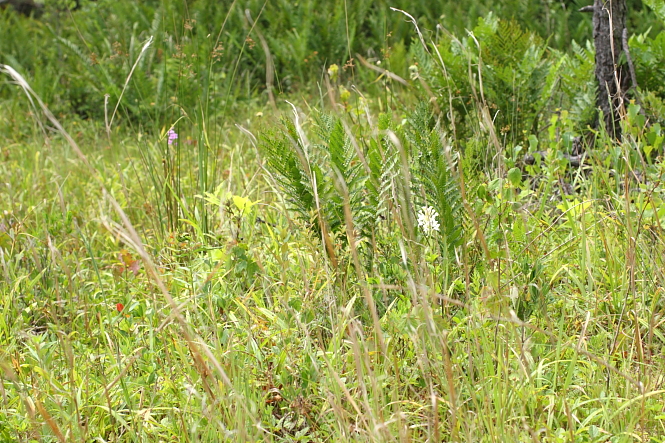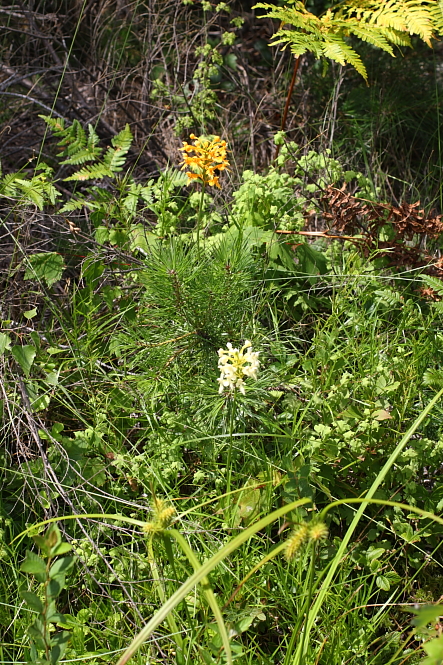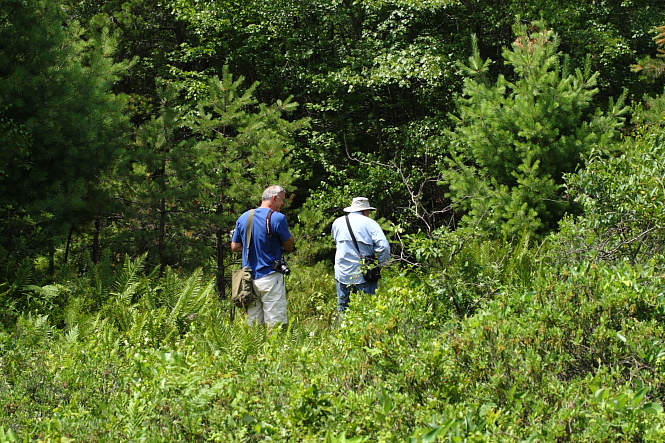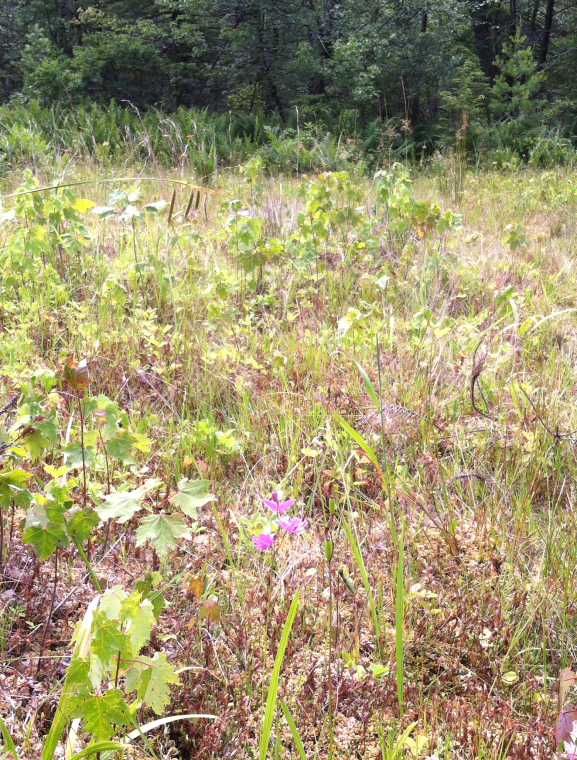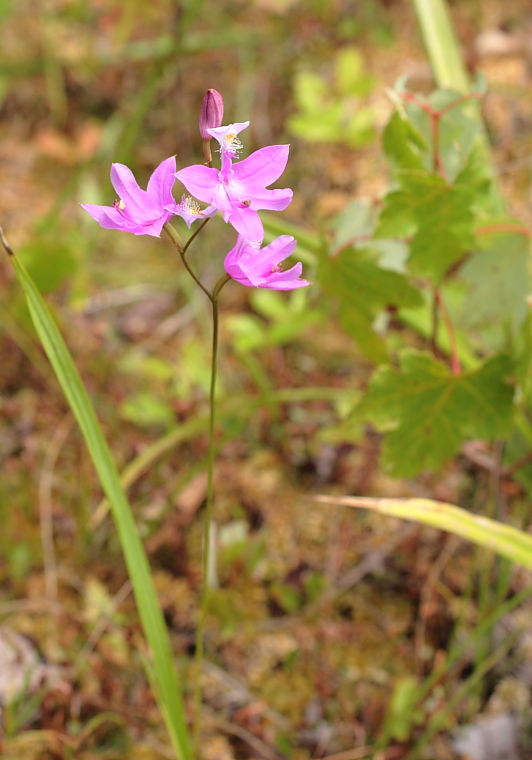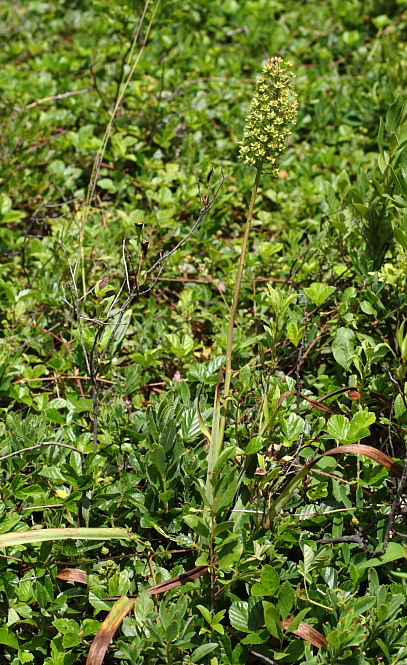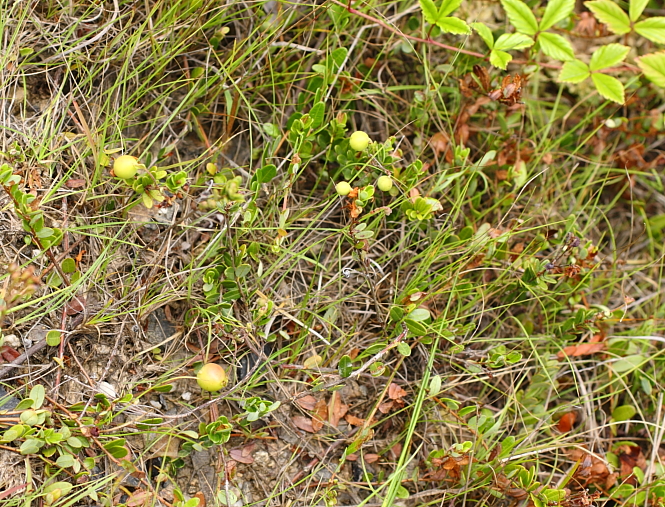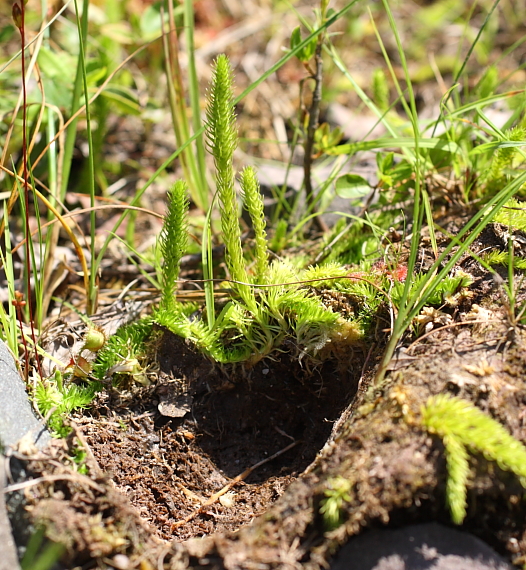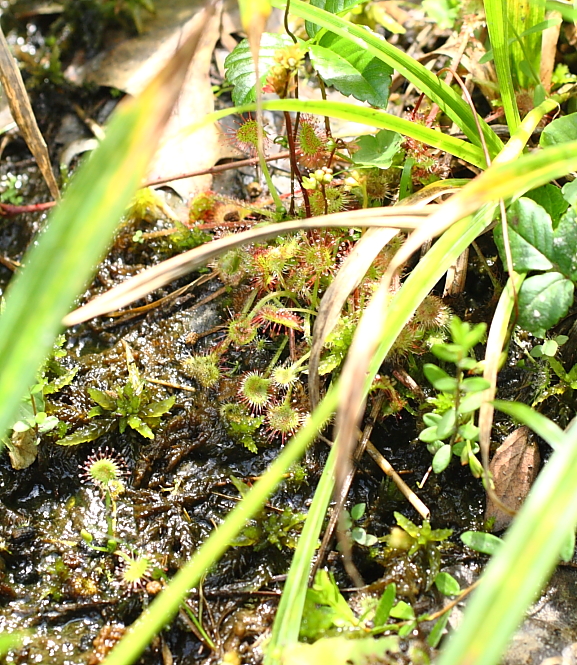Thanks! We also met native orchid friends Bob Sprague and Eleanor (Sam) Saulys) unexpectedly at the bog; twice Ken and I have been on trips and run into Sam. Co-incidentally, both spots had platanthera ciliaris (the yellow or orange-fringed orchis). Bob was leading some botanical club tours here, and Sam is just everywhere

continuing on, there were a few plants of the yellow fringed orchis, and lots of hybrids of colors between deep orange and creamy orange-white. it's difficult to tell in a mixed population which might be true species, but usually if it's completely bright white or deep orange, then the odds are pretty high that it's a species. the hybrids can be very pale orange, so slight a color that it sort of muddies the white, or it can be a very pleasant color, and often the color expression can create two-toned flowers. often, you'll have a mostly orangish flower, but the fringes of the lip are strikingly white! Sam found a very nice example of the latter type which is shown later.
at most locations, the white fringed orchis is in wetter spots, often in moss of bogs, lower parts of sandy swales that stay moist (like roadside ditches). the ciliaris is often in a slightly higher position, usually; a little higher than the water table, but often a sandy spot with a bit more drainage (but the water isn't very far from the roots, making it somewhat of an always-damp spot)
one of the few most-likely true platanthera ciliaris, orange-fringed orchis
closer view
natural hybrid between the white and orange fringed orchises
Ken Hull getting a shot of some likely hybrids in a small shaded ditch
closeup of plants in drainage
a beautiful natural hybrid with just a shade of white on the fringes of the lip
The orchids seem to have taken advantage of the altered environment.
yes! many north american natives thrive in disturbed areas. there are lesser numbers that need very undisturbed areas, and most of those are the ones formerly native to new york state that I wasn't able to find. the spiranthes probably have their highest numbers now that there are miles of roads going through rock cuts and wet areas, allowing them to thrive and spread. unfortunately, the orange fringed orchis used to be found in central ny near oneida lake, but between landscaping of the shoreline and prevention of forest fires, their habitat isn't allowed to be disturbed in the proper way
